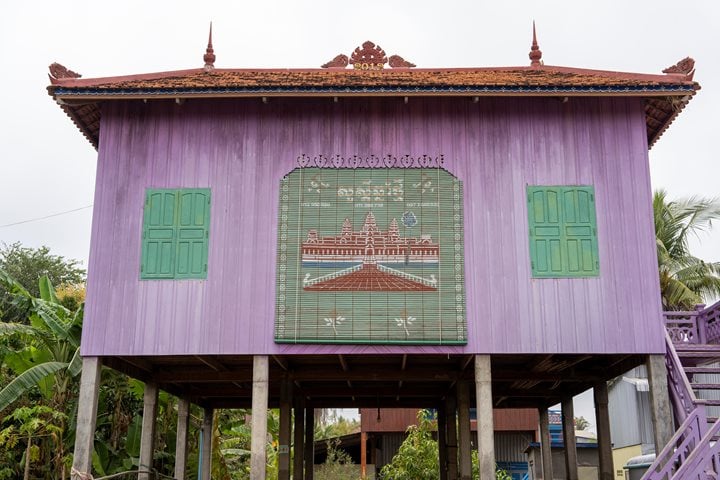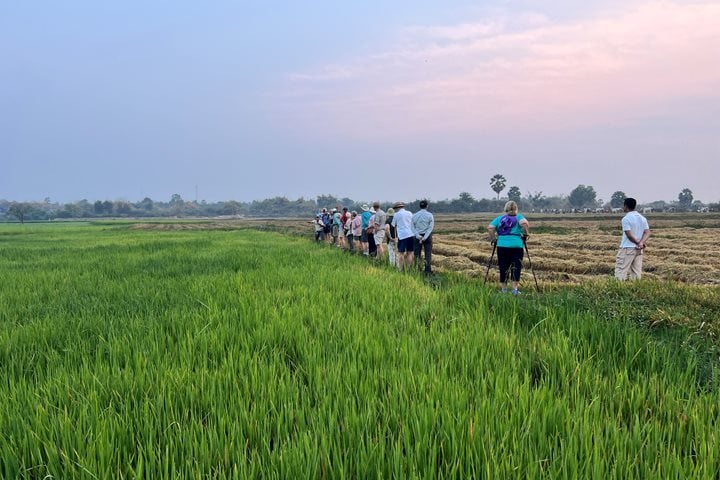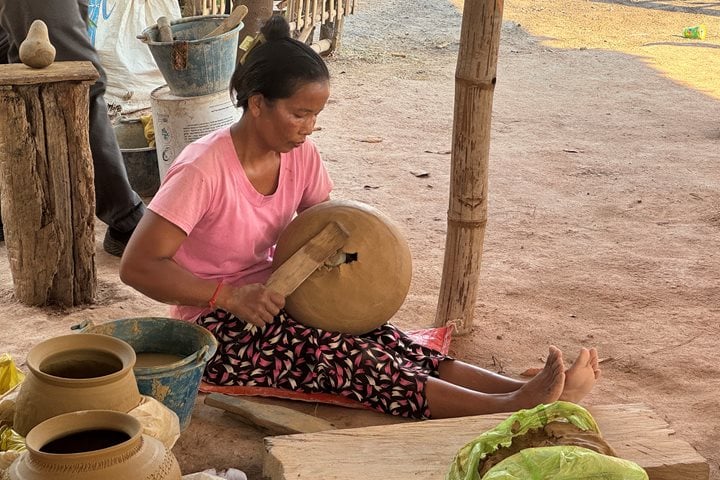At 8 a.m. we ventured out to Angkor Ban, a lovely little village with about 250 families living in stilt houses, some of which were one to two hundred years old. First we walked through the local temple with giant sculptures of fruits and vegetables on one side and religious figures riding on the 12 Zodiac animals on the other, all very colorful. The temple itself had numerous, brightly colored buildings with lots of funerary stupa nearby. We were given the opportunity to enter one of the magnificent, old traditional homes to see how the locals lived. The slatted bamboo floors provided much needed ventilation. After walking through the town we returned to the Jahan.
Back on board, we awaited two monks to arrive to do a blessing ceremony for guests and staff in the lounge area.The two monks sat behind a table filled with flowers and fruit. The blessing was recited in both Pali and Khmer, while water was sprinkled on the respectful crew seated on the floor with heads bowed and hands pressed together. Donations were collected for the monks and their temple, and fruit and food were also offered to the monks. Our guide Vuthy explained the proceedings and answered questions. It is customary to show respect to the monks by touching the ground or moving the hands in prayer three times to indicate the Buddha, Dharma (or Teachings) and the Sangha (or Monkhood).
Before lunch, there was a short disembarkation briefing followed by Barry’s presentation on the Khmer Angkor Empire in the lounge. Shortly thereafter, the ship arrived at Kompong Cham and docked near the Japanese Friendship Bridge (built in 1998). At 3 p.m. we disembarked for our excursion to Wat Nokor, a modern temple and monastery with a rather interesting, ruined, late 12th-century Buddhist temple, built by the greatest Khmer King Jayavarman VII (r, 1180-1220). It provided a preview of the style and structure of temples we will be exploring in Siem Reap. What is really unique, is the fact that a more recent, colorful Hinayana Buddhist pavilion has been created within the central court of the older Mahayana Buddhist temple. The ancient temple showed blackened walls caused by fires started to smoke out wild honeybees so as to get their honey. Another theory was to smoke out snakes and yet another theory was that bombs were dropped on Khmer Rouge in the temple in the 1970s by Lon Nol’s jets.
On the way back to Jahan, we stopped to view the town’s amazing bamboo bridge, which lasts only six months until the floods and then has to be rebuilt when the flood waters recede. It was amazing to walk on the bouncy bridge.
As this was our final evening on board, various festive events were planned, including a staff presentation. All staff members were recognized—they have made our stay so pleasant and assisted us in every way possible, getting us drinks, cleaning our shoes after excursions, providing delicious meals, and more. Our final dinner was fantastic and everyone enjoyed the photo slideshow, showing our excursions and activities on or off the ship accompanied by music and much laughter. What a great idea to capture all of our fun memories.







